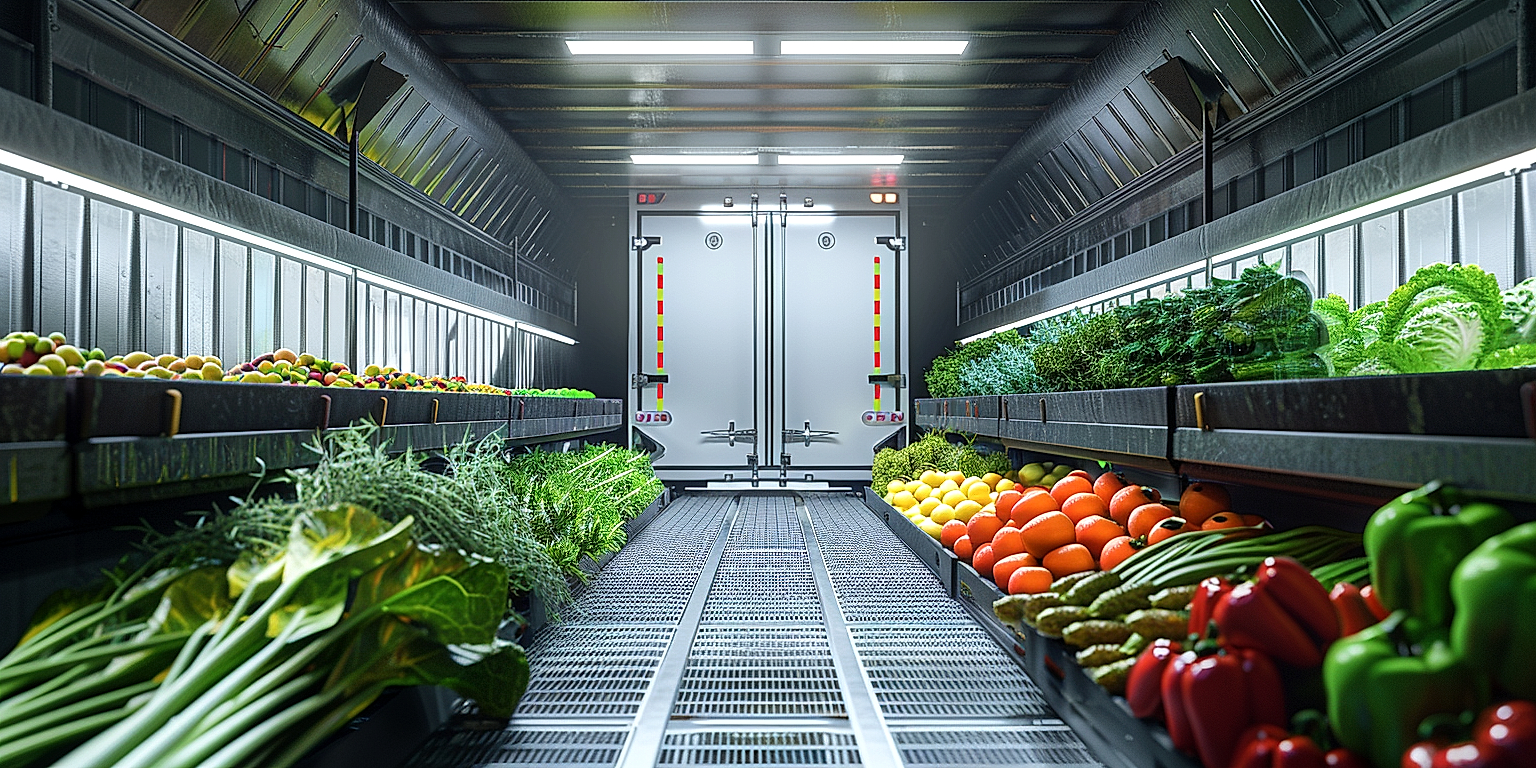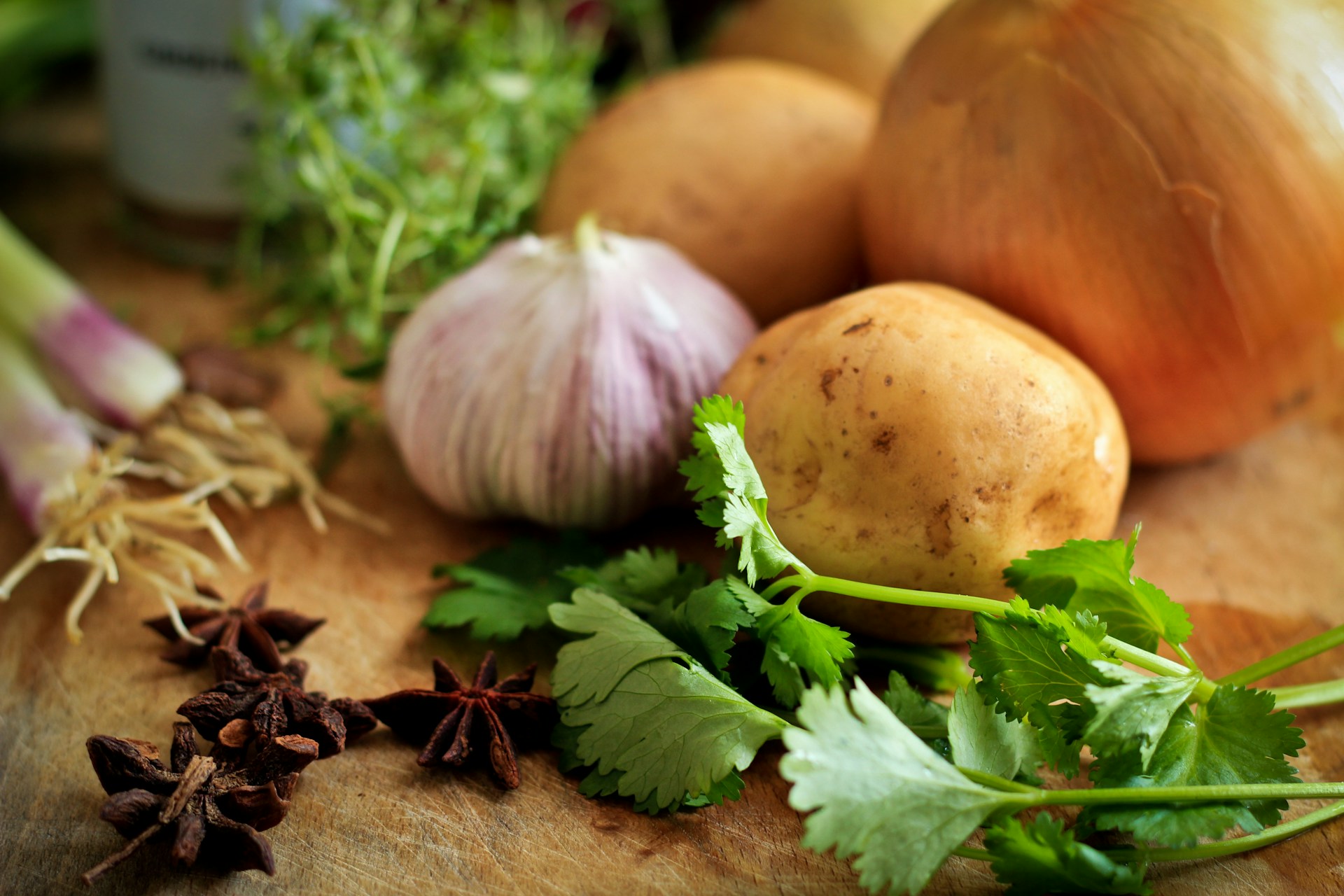Understanding the various procedures and precautions that underpin produce transportation is integral for ensuring premium quality and optimal safety.
The world of agribusiness is a complex network of systems intertwined with significant responsibilities.
Any disregard for key sanitary measures in the shipping industry can cause both health risks for consumers and economic repercussions for businesses.
With the globalization of fresh produce trade, maintaining cleanliness and safety during shipping has become progressively crucial.
Consequently, the need to mitigate contamination risks is more pressing than ever.
This blog post aims to shed light on the stringent measures necessary to prevent contamination and safeguard the integrity of fresh produce during shipment.
Contents
- Measures To Prevent Contamination In Produce Shipping
- 1. Follow Good Agricultural Practices (GAPs)
- 2. Use clean packing materials only.
- 3. Regularly Disinfect Shipping Containers
- 4. Train staff in food safety protocols.
- 5. Don’t mix produce with non-edible goods.
- 6. Implement temperature control in transit
- 7. Regularly Inspect Stored Produce for Contamination
- 8. Conduct Pest Control in Storage Areas
- 9. Discard Visibly Spoiled or Contaminated Products
- 10. Enforce strict personal hygiene among handlers
- The Bottom Line
Measures To Prevent Contamination In Produce Shipping
1. Follow Good Agricultural Practices (GAPs)
Good Agricultural Practices, often abbreviated as GAPs, are guidelines designed to ensure that cultivate and harvest is done in a way that reduces risks of contamination and enhances the quality and safety of produce.
One of the fundamental aspects of following GAPs in the context of preventing contamination in produce shipping involves field selection.
Fields should be placed far from potential contaminants such as livestock operations, landfills, or waste treatment facilities to avoid bacterial run-off or the spread of contaminants by wind.
In addition, the quality of irrigation water used in the field must be regularly monitored and tested for harmful microorganisms.
Another critical element of GAPs is related to pest management. The correct and responsible use of pesticides is crucial to prevent food poisoning and cross-contamination during shipping.
Moreover, having a well-maintained sanitation facility for the farmers in the field can prevent the spread of harmful germs from humans to the produce.
Properly disposing and managing animal manure, which can be a significant food safety concern, is another essential factor in following GAPs for ensuring safe produce shipping.
Properly handling manure can prevent bacteria, such as E.coli, from contaminating the produce.
Furthermore, GAPs recommend using potable water for the final rinse of produce to lower the chances of post-harvest contamination.
Following proper harvesting techniques, including collecting produce in clean and sanitized containers, can greatly reduce contamination risk during the shipping process.
It’s also significant to maintain cleanliness during the packing process, including washing hands regularly, having proper waste management, and keeping the packing area clean and sanitized.
Also, GAPs encourage to keep records of all the farming activities as it allows for quick and efficient traceback in case of a food safety issue.
Finally, training for farm workers about these practices is equally important as a lack of food safety knowledge could undermine all the efforts to date.
Though these guidelines might seem overwhelming, they provide a means to systematically address biological, chemical and physical risks associated with food safety in a proactive manner during the cultivation process.
In summary, adherence to Good Agricultural Practices is absolutely critical to ensure the overall safety and quality of produce – starting from cultivation and harvest through transportation and final distribution.
2. Use clean packing materials only.
In the logistics sector, particularly when dealing with fresh produce, the use of clean packing materials is a practice that must not be compromised.
Clean packing materials act as a first line of defence, against external contaminants that could compromise the safety and quality of the fresh produce in transit.
Using clean packing materials ensures a hygienic environment which is free from pollutants or any other elements that could spoil or contaminate the foods.
Choosing packaging materials that are easy to clean, non-porous, and non-absorbent can also significantly reduce the risks associated with microbial contamination.
These attributes make it difficult for bacteria and fungi, which are often responsible for food spoilage, to survive and multiply.
It is important to note that clean packing materials go hand in hand with clean handling mechanisms to prevent the risk of cross contamination.
When packing produce, make sure to use gloves or use tools that are equally clean and free from microbial contamination.
Regular inspection of these materials to ascertain their cleanliness is also a crucial part of maintaining food safety in the shipping process.
While cleanliness is important, it is also essential to select materials that won’t physically damage the produce or allow it to dehydrate during transit.
For instance, sharp edges or materials that can become hot can cause damage to certain types of produce.
Additionally, the material’s design should ensure good ventilation and prevent moisture retention, which could lead to deterioration or fungal growth.
The need for clean packing materials extends not only to the containers used, but also to any padding or filler materials used within the container.
These should also be clean and non-contaminating.
Finally, when working with reusable packaging materials, it is necessary for them to go through a thorough cleaning process between each use to ensure their continued hygiene.
In combination with other measures such as good agricultural practices, temperature control, and strict hygiene practices, using clean packaging materials can significantly reduce the risk of contamination during shipment and ensure the delivery of safe and high-quality produce to the consumer.
3. Regularly Disinfect Shipping Containers
The practice of regularly disinfecting shipping containers is crucial in the implementation of measures intended to prevent contamination in produce shipping.
Disinfection processes are intended to kill or render inert disease-causing microorganisms, which could pose a significant harm to the produce.
While the cargo is in transit, harmful microorganisms can easily spread and multiply, potentially contaminating the load.
At the end of the journey, these contaminants could be passed on to the produce or even the consumers, posing possible health risks.
Therefore, shipping containers need to undergo regular disinfection to ensure that no harmful substance or organism is present that could cause contamination.
This process eliminates the possibility of carrying any lingering odours, residues, or contaminants from previous cargoes.
A consistent disinfection protocol utilizes chemical disinfectants, hot water or steam to clean shipping containers.
By understanding the purpose and benefits of regularly disinfecting shipping containers, businesses can help prevent produce contamination and maintain a high standard of food safety.
This practice also certifies that every new load of produce put into the container is completely separated from any potential contaminants.
The ultimate goal is to maintain the integrity of the products and to ensure the health and safety of the end consumers.
Extra caution must be taken when choosing the disinfectants to guarantee they are safe for food contact and effective in eliminating contamination sources.
It is equally vital that they are adequately disposed of after use, to avoid further environmental contamination.
Furthermore, protocols should be in place to ensure that food-safe containers are used in conjunction with these disinfecting procedures.
Finally, record-keeping of all disinfection actions performed should be a standard practice to prove that all necessary actions have been put into motion to avoid produce contamination.
All in all, regular container disinfection is an effective and necessary measure to prevent contamination in produce shipping.
4. Train staff in food safety protocols.
One essential measure to prevent contamination in produce shipping involves training the staff in appropriate food safety protocols.
This training ensures a high level of understanding and appreciation of the importance of preventing contamination during the transport of the produce.
Through proper training, the employees become adequately equipped to handle the produce correctly, ensuring it remains uncontaminated during transit.
Educational sessions should not be a one-time event; instead, they should be an ongoing process, as materials, processes, and protocols might change over time.
The food safety protocols should be clearly defined and easily understood by all staff.
Frequent reiteration of these protocols reduces the likelihood of mistakes or oversights that could lead to contamination.
Training can also include a component of role-play or practical sessions where the staff can actively practice what they are learning.
It is beneficial to include multiple teaching methods, as not everybody learns in the same way.
Another critical aspect of training is providing feedback to employees during the learning process and even after training, to encourage ongoing adherence to the learned protocols.
Organize refresher courses at regular intervals to remind the staff about the importance of good food safety standards and to ensure that information stays fresh in their minds.
Testing the knowledge the staff has acquired from the training sessions can be a good gauge of the training’s effectiveness and may identify areas that need further attention.
Efficient training programs not only equip staff with necessary skills, but they also foster a culture of food safety within the organization.
Every employee, regardless of their role in the process, should take personal responsibility for maintaining and promoting food safety.
This shared commitment reflects a collective effort to uphold the highest food safety standards.
Only by maintaining rigorous food safety standards in produce shipping can companies guarantee consumer trust and the high quality of their products.
Ultimately, the goal of staff training in food safety protocols is to reduce contamination risks and provide the healthiest and safest produce possible to consumers.
5. Don’t mix produce with non-edible goods.
One of the essential measures to prevent contamination in produce shipping is to strictly avoid mixing produce with non-edible goods.
This concern stems from the risk of cross-contamination, a process in which harmful bacteria or other contaminants spread from non-food items to fresh produce.
Non-edible goods such as chemicals, raw materials, or unclean supplies, often harbor dangerous toxins or harmful bacteria that can easily spread to fruits and vegetables during transport.
For instance, if a crate of apples is placed next to a canister of cleaning fluid or a box of raw chicken, the potential for contamination is significant.
Separating produce from non-edible products is not only a good practice to maintain the quality of the produce, but it’s also a critical health and safety measure.
In addition to physical separation, it’s also important to consider airflow and temperature as factors in cross-contamination.
A produce’s storage area must be properly ventilated to prevent the buildup of harmful gases or airborne contaminants from non-edible goods.
Furthermore, shipping companies must strictly enforce this separation and be vigilant when loading and unloading cargo to avoid any product mixing.
This vigilance helps to minimize contact between food and non-edible goods, thereby drastically reducing the risk of produce becoming contaminated.
Every staff member involved in the shipping process should understand the dangers of cross-contamination and be trained to avoid mixing produce with non-edible goods.
Providing clear instructions and guidelines, and ensuring these are enforced, can lead to a safer, more reliable produce shipping operation.
If, due to space constraints, it becomes impossible to completely avoid mixing, it’s crucial to use appropriate barriers or protective packaging to prevent any contact between the produce and non-edible goods.
Such precautions have an important role in implementing a contamination-free shipping process.
This approach emphasizes the importance of categorization and segmentation in a shipment, making it an integral component of preventing contamination in produce.
Ultimately, following this measure will enhance the cleanliness, safety, and overall success of produce shipping operations.
6. Implement temperature control in transit
To safeguard the overall quality and safety of fresh produce, implementing temperature control in transit is a vital strategy.
This measure not only preserves the freshness of the goods but also minimizes the growth of harmful pathogens such as bacteria and fungi that could potentially contaminate the shipment.
Most perishable goods, including a variety of fruits and vegetables, require specific temperature ranges for optimal preservation.
A comprehensive understanding of the temperature requirements of different produce is thus crucial for maintaining their quality during transit.
Another significant aspect is the consistency of temperature throughout the shipping process.
Fluctuations in temperature, especially when they occur frequently, can lead to degradation of produce, making them susceptible to contamination.
Therefore, shipping containers must be fitted with high-quality, reliable temperature monitoring and control systems that can maintain the specified temperature range.
Even the shipping vehicles themselves should be well-equipped with durable insulation materials to prevent sudden temperature changes due to external factors.
Moreover, the timing of the shipment should also be planned strategically, considering seasonal temperature variations and the distance of the journey.
For instance, shipping during the cooler hours of the day or evening can help retain optimum temperature levels for the produce.
Adequate training must be provided to staff involved in handling, preparing for shipment, and transporting the produce, to reinforce the importance of temperature control.
In addition to understanding the temperature requirements of different produce, the personnel should also be adept at operating and monitoring the temperature control systems installed in the containers or vehicles.
Investing in advanced technologies, such as real-time tracking of temperature inside the shipping containers can further enhance the success of temperature control strategies, by enabling prompt action in case of any discrepancies.
Should any temperature abnormalities be detected within the shipment, it is essential to address the issue with immediacy, whether it involves adjusting the temperature controls or isolating the affected batch from the rest of the produce, to prevent widespread contamination.
In conclusion, faced with the essential role of temperature control in preserving produce quality and preventing contamination, implementing and maintaining adequate temperature control measures throughout the shipping process is of utmost importance in the agricultural sector.
7. Regularly Inspect Stored Produce for Contamination
Regular inspection of stored produce is a necessary step in preventing contamination in produce shipping.
The importance of constant surveillance cannot be underestimated when it comes to maintaining the highest standards in the safety of foods.
Lack of proper inspection can go a long way in contributing to the growth and spread of harmful bacteria and other pathogens on produce.
With this is in mind, the inspection should not be hurried or done superficially as the stakes in terms of public health and safety are pretty high.
Having a standard procedure that dictates how often and how thoroughly these inspections should be done can be extremely helpful.
Inspectors need to look for signs of physical damage, discoloration, or an unusual odor which are all common indicators of contamination.
Not only is it crucial to inspect the fruits and vegetables themselves, inspectors must also consider the state of the containers in which they were stored.
If the containers show signs of mold growth or other foreign substances, it indicates that the produce could be at risk.
A standardized and consistent approach to inspection is key, which is why developing checklists, schedules and standard operating procedures is an integral part of maintain food safety in produce shipping.
Profound knowledge and understanding of the types of contamination that can occur is necessary for anyone conducting these inspections.
They must also know the types of produce and the conditions under which they become susceptible to contamination, such as certain humid conditions encouraging fungal growth.
It is important that details of each inspection are documented and stored correctly, which would come in handy if a potential contamination is detected later.
This allows one to trace back, identify when the contamination could have potentially begun and understand why, giving insights into precisely what needs to be fixed in the process.
Regular inspection of stored produce should always complement other measures and not seen as a stand-alone method for food safety.
Lastly, keeping in mind that while regular inspections are extremely important, they are only as good as the corrective measures that follow when issues are spotted.
Quick and effective action is the required response when contamination is detected through these regular inspections in produce shipping.
8. Conduct Pest Control in Storage Areas
The presence of pests in a storage facility can result in the contamination of produce, thereby compromising the safety of such produce for human consumption.
It is therefore crucial that measures are put in place to ensure effective pest control in storage areas.
Pests such as rodents, insects, and birds are potential carriers of pathogens which they can deposit on the produce.
Proper pest control in storage areas involves numerous measures and strategies, including physical, chemical, and biological controls.
Notably, regular inspections should be conducted in the storage areas to detect the presence of pests early enough, hence allowing for prompt and effective control measures.
In addition to regular inspections, good sanitation practices in the storage areas can deter pests from occupying these areas.
This includes regular cleaning and removal of potential food sources and breeding sites to make the environment less appealing to pests.
For effective pest control, one can also consider professional pest control services that have the required expertise and tools to manage a pest infestation.
Another effective measure is to incorporate the use of pest-resistant packaging materials which discourage infestations.
Structural changes such as sealing off possible entries for pests can also prove to be effective in deterring them from the storage areas.
The use of chemical control measures such as pesticides should be done with caution to avoid contamination of the produce.
For this reason, it is recommended to use pesticides that have been approved for use in food storage facilities and to strictly follow the manufacturer’s instructions.
On the other hand, biological control methods involve the use of natural enemies of the pests, such as predators, parasites, or pathogens to control the pest population.
As part of pest control measures, it is also important for the staff members to be properly trained on how to identify signs of pest infestation and the subsequent actions to take.
In summary, conducting effective pest control in storage areas ensures the safety of the produce in transit, thus playing a significant role in preventing contamination in produce shipping.
9. Discard Visibly Spoiled or Contaminated Products
One paramount strategy in preventing the spread of contamination in produce shipping is the proper disposal of visibly spoiled or contaminated goods.
This is underpinned by the fact that contaminated products can compromise the safety of other produce during storage or transportation.
An essential component of this measure is the ability to effectively identify contaminated products in the first place.
This requires knowledge of the signs and symptoms of fruit and vegetable disease and spoilage, such as change in color, soft spots, and unpleasant smells.
Upon identification, these goods should be immediately separated from the rest of uncontaminated produce.
Segregation prevents the potential spread of disease spores or bacteria to healthy produce.
Quick and efficient disposal of contaminated products is key in maintaining the integrity of the remaining produce.
Appropriate disposal methods must also be observed, ensuring that these products do not end up in areas where they can still contaminate other goods.
For instance, it is essential not to dispose of spoiled produce in and around storage facilities and packing stations.
Properly sealed and labelled containers should be used for temporary storage of contaminated produce before its final disposal.
These measures help to reduce the risk of cross-contamination within the work area.
It is also essential to routinely clean and disinfect the area where contaminated products were identified and stored.
This helps to further minimize the risk of contamination spreading to other produce and areas.
All the while, precautionary measures must be maintained to prevent spreading the pathogen to other areas or items, thus a strict personal hygiene among the handlers is highly warranted.
Regular training of staff on identification and appropriate handling of spoiled goods can essentially enhance the implementation of this measure.
Lastly, a record of all discarded produce can help trace back sources of contamination improving the overall effectiveness of preventive measures.
10. Enforce strict personal hygiene among handlers
The 10th and one of the most vital measures in preventing contamination in the shipping of produce is to enforce strict personal hygiene among handlers.
Maintaining good personal hygiene is a critical cornerstone in preventing contamination due to direct or indirect contact with the produce.
Given that produce handlers interact directly with the products, any lapse in their hygiene could lead to a significant risk of contamination.
This is because humans can carry several forms of harmful pathogens, including bacteria and viruses, which could easily be transferred to the produce.
The basic hygiene practices should include thorough and regular hand washing with antibacterial soap.
Handlers should also avoid engaging with produce handling when suffering from any form of infectious disease as this can lead to an immediate risk of contamination.
Additional safety garments such as gloves, hair nets, and clean uniforms should also be worn by handlers at all times.
Personal protective equipment (PPE) can act as an additional barrier to prevent contamination being transferred from handlers to the produce.
These PPEs should also be cleaned regularly, and damaged or worn-out PPEs need to be replaced promptly.
The enforcement of these measures should be carried out by the management of the shipping company, with each handler well-informed about the importance of hygiene.
Policies on regular health checks, random hygiene checks, and penalization for hygiene non-compliance should be set.
This is not only for the sake of contamination prevention but also for the welfare and safety of the handlers themselves.
Furthermore, the responsibility of personal hygiene does not solely lie with the handlers, but also extends to the entire company staff.
This is because anyone in the company who comes into contact with the produce or the packaging materials could potentially introduce contaminants.
To maximize the effectiveness of these hygiene measures, ongoing education and training sessions should be conducted for the staff.
Through these trainings, staff can be regularly updated on the best recent practices, and can effectively understand the catastrophic consequences of negligence in this regard.
The Bottom Line
Maintaining the safety and integrity of food during transportation is vital.
By adhering to Good Agricultural Practices, using cleansed packing materials, and ensuring regular disinfection of shipping containers, the risks of microbial contamination can be significantly lessened.
The training of staff in food safety protocols plays an essential role in minimizing the risk of foodborne illnesses, as does the diligent practice of not mixing edible produce with non-edible goods.
By controlling temperature during transit, inspecting produce for possible contamination regularly, and conducting efficient pest control, we can ensure that the highest safety measures are upheld.
Discarding spoilt or contaminated products without hesitation and maintaining strict personal hygiene among handlers should always be non-negotiable.
These comprehensive steps together can ensure that the food reaching the consumers is of the highest standard—safe, healthy, and uncontaminated.




